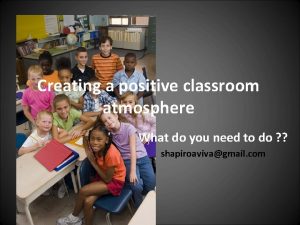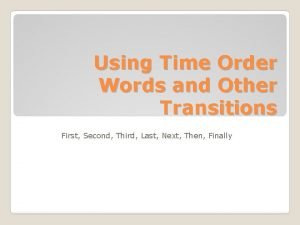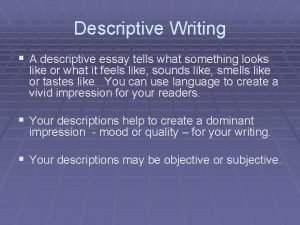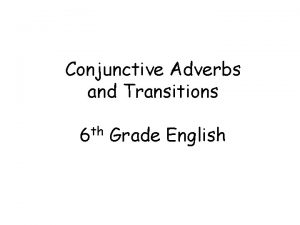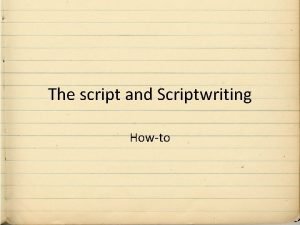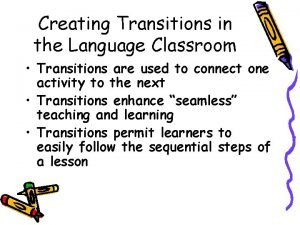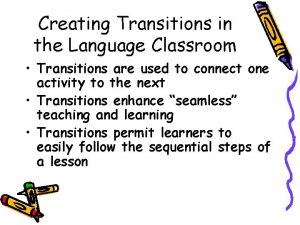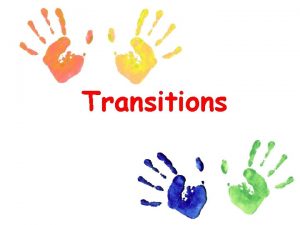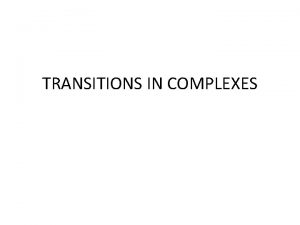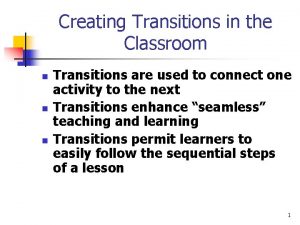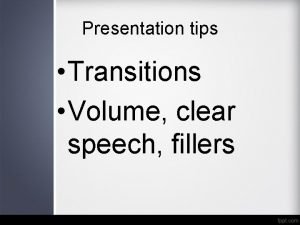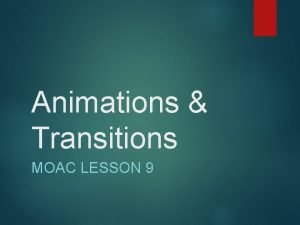Creating Transitions in the Classroom n n n








- Slides: 8

Creating Transitions in the Classroom n n n Transitions are used to connect one activity to the next Transitions enhance “seamless” teaching and learning Transitions permit learners to easily follow the sequential steps of a lesson 1

How To Create Transitions n n n Usually predicated upon content of the lesson Objectives must first be established, e. g. , What do you want the learner to be able to do? Look carefully at what is to be taught and then decide how to go about teaching it. Make a list! 2

Steps to Follow to Implement Transitions 1. 2. 3. Treat the Warm-Up as a point of departure. From the Warm-Up use the last sentence/question as the lead-in to the first activity of the day. Go to your list and make sure activities are in an order that connects each one. 3

Steps continued 4. 5. “Connecting” is what ties together each activity. The last sentence(s)/question(s) provides the transition to the next activity. 4

Example Warm-up: 1. What day is today? 2. What is the weather today? 3. What do you wear when it’s hot? 4. What do you like to eat when it’s cold? 5

Example continued Activity # 1 Introduce fruits and vegetables using a video clip of an open-air market in a country where the target language is spoken. Have students watch first w/o the sound. Ask questions. Have students view with sound. Have students pair and discuss, naming foods they recognized. Transition: In the video, what’s the weather like? Where does this video take place? 6

Example continued Activity # 2 Students use a color transparency to discuss weather conditions in countries where the target language is spoken. Incorporate foods (fruits/vegetables) that may be grown in these countries. Transition: What do you wear when you go to countries that are cold in December & January? 7

Example continued Activity # 3 Have a suitcase filled with clothing items and a picnic basket filled w/ plastic fruits and vegetables and have students come up in pairs while the class gives them clothing and food items to select. Once these are selected, students create a scenario in which they utilize the vocabulary for clothing, food, and weather. 8
